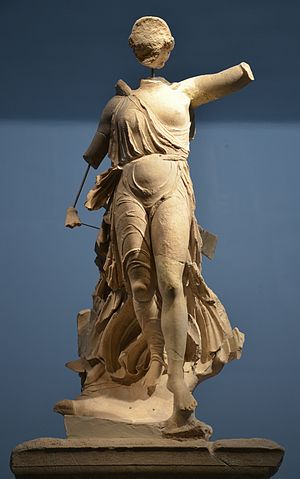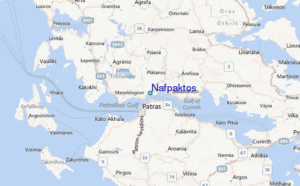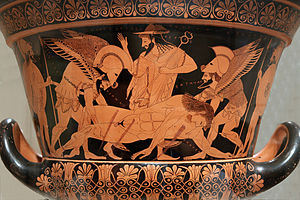A statue and Sparta.
As a piece of art, the Nike of Paionios is a wonderful thing. In its day it stood on a tall triangular column in front of the temple of Zeus at Olympia. Made of Parian marble it would have looked out across the thousands who would regularly visit the sanctuary for the famous Olympic Games.
(and in case you wanted to know more about the Olympic Games here is a link to my podcast episode all about it).
That it was dedicated to Nike, the goddess of victory, might lead you to think that this was purely in the context of sporting accomplishment. Yet the inscription and backstory suggest a separate meaning and one which may have irked any Spartan walking below it.


The earthquake in 464 BC.
Thucydides in his History of the Peloponnesian War described a sizeable earthquake in the southern Peloponnese (Bk 1.101ff). Though it’s not been clearly identified the consensus is that this took place near the Taygetus mountain range. It’s unclear how strong this was but it reportedly caused widescale damage.
This presented an opportunity to one demographic, the helots. This is an umbrella term for what can best be thought of as a people who had been forced into a form of serfdom. Helots worked the land and acted as a disposable workforce which was essential to the Spartan state. According to Thucydides helots in the area and those of Thuria and Ethea rose in revolt. Occupying a defensive position on Mount Ithome they resisted Spartan attacks and only left once a treaty had been agreed to ensure their safety.
Sensing an opportunity Athens took them in and rehomed them in the city of Naupactia, on the coast of the Gulf of Corinth.
Dedications and propaganda.
Why is this relevant? Well the inscription on the column upon which the statue stood explains it nicely
“The Messanians and the Naupaktians dedicated this statue to Zeus Olympios from the spoils of the wars. Paionios of Mende made it, who also won the competition to make the akroteria of the temple”
The statue was set up by those, or at least the descendants, of those who had successfully rebelled against Sparta. Added to this was the reference to the ‘spoils of wars’. It’s been argued this related to the Spartan defeat at Sphacteria in 425 BC. The statue having been set up around 420 BC.
We might think that mixing sports and politics is a modern concept, but far from it. Olympia was a choice location to deliver any message, or propoganda. It wasn’t just mainland Greeks doing this either.



